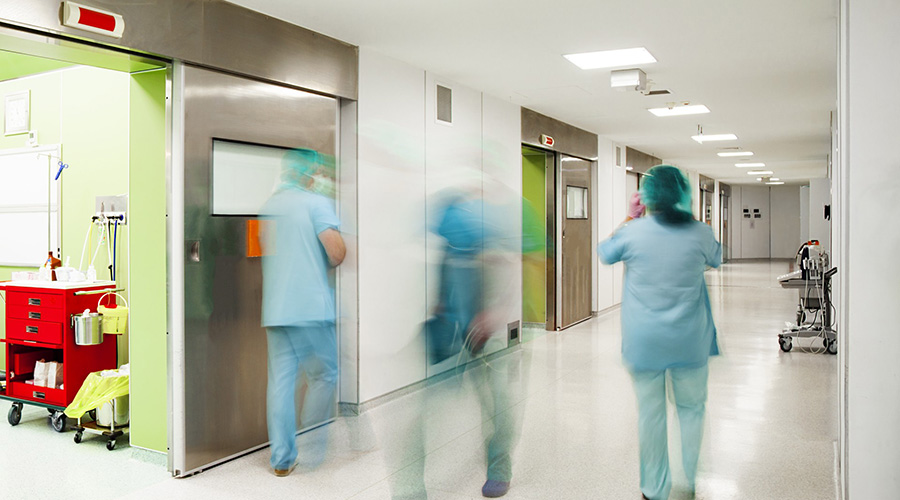As one of the leading architecture firms in the Southeast, Baker Barrios Architects has designed a number of healthcare projects -- and has noticed several trends along the way. More than nearly any other industry, healthcare is in an almost constant state of growth and development. For that reason, it should come as little surprise that healthcare architecture is also ever-developing and changing to meet the demands of the profession and the need for patient centered design.
In keeping with that idea, Baker Barrios Architects has created a list of the top six trends that are currently shaping healthcare architecture.
Six healthcare architecture trends
Overcrowding Prevention: The last thing a patient wants to feel is claustrophobic due to overcrowding. Many times, overcrowding is due to floor plans that inadequately account for proper traffic flow. Anticipating overcrowding by taking advantage of every square inch of a room’s layout and maximizing space can go a long way in making a patient feel more comfortable and can also give physicians enough room to perform their job. Strategically placing patient subwaiting areas and accommodating family members can also help alleviate these issues.
Personalized Patient Rooms: Personalization can be incredibly important for the comfort of patients when placed in an unfamiliar environment. Being in a healthcare facility can sometimes cause anxiety. To that end, healthcare architecture is increasingly attempting to allow for more personalized patient rooms to reduce anxiety while enhancing satisfaction. Features like patient communication boards and customizable digital signage with the name of the patient, family photos, weather forecasts, and more are being incorporated into healthcare facilities.
Micro-hospitals: Small-scale inpatient facilities are on the rise. These micro-hospitals feature the likes of an ER, pharmacy and lab while offering radiology, surgery and other services found in full-size hospitals. The benefit to going small? These facilities provide easy access to a full suite of healthcare services for patient convenience. They are local to communities, reducing the need for travel to the larger hospitals outside of patient communities.
Recreating Home: It is often hardest for patients, especially those in for long-term stays, to feel at home when in a healthcare facility. When you look at traditional healthcare architecture, it can be easy to see why – white walls, pale colors, fluorescent lights and sterile surfaces. To accommodate patient comfort, facilities are designed to be more hospitable, offering warmer artwork and color palettes, larger windows to allow for more natural light, and furniture that looks and feels more like home decor instead the cold, industrial options of old.
Scalable Rooms: Since patients may have multiple visitors at a time, hybrid products, like sofa beds and recliners can go a long way to ensuring that caregivers and visitors have the space they need, when they need it, without crowding the room. As stated above, overcrowding prevention is a major consideration in healthcare architecture, and utilizing convertible furniture is an easy design solution for making healthcare architecture work for a number of patients and their guests. Having family and friends close during recovery can make a dramatic difference, and this trend facilitates that.
Access to Nature: Healthcare architecture that is purposefully designed to give patients a view and access to reconnect with the outdoors can be great when breaking the anxiety of being in a healthcare facility for an extended stay. Gardens, live plants throughout the facility and plentiful windows open to green grass, trees and shrubbery, brighten rooms and add a sense of serenity and calm. Moreover, access to nature has been proven to better patient recovery. There is a good bit of discussion and design in the industry regarding healing gardens which is meant to relieve stress and increase a sense of healing.
As healthcare continues to advance, the architecture of healthcare facilities has evolved as well. When it comes to the design of such facilities, architects are challenged to create something both visually appealing and properly equipped for patients. Architecture and design that is specifically strategized to reduce stress, promote calm and create comfort is exactly what the doctor ordered, and something that Baker Barrios Architects is happy to see implemented in healthcare projects into the future.
The sky's the limit when it comes to other advancements that will be seen moving into the future. With personalized rooms, the growing availability of micro-hospitals, facilities that feel more like home, convertible furniture for guests and greater accessibility to mother nature, healthcare architecture is actively working to make healthcare more comfortable for patients looking for comfort when they need it most.
John Slavens is principal of healthcare at Baker Barrios.

 Making the Energy Efficiency Case to the C-Suite
Making the Energy Efficiency Case to the C-Suite How to Avoid HAIs This Flu Season
How to Avoid HAIs This Flu Season Design Phase Set to Begin for Hospital Annex at SUNY Upstate Medical
Design Phase Set to Begin for Hospital Annex at SUNY Upstate Medical Building Hospital Resilience in an Era of Extreme Weather
Building Hospital Resilience in an Era of Extreme Weather Ennoble Care Falls Victim to Data Breach
Ennoble Care Falls Victim to Data Breach